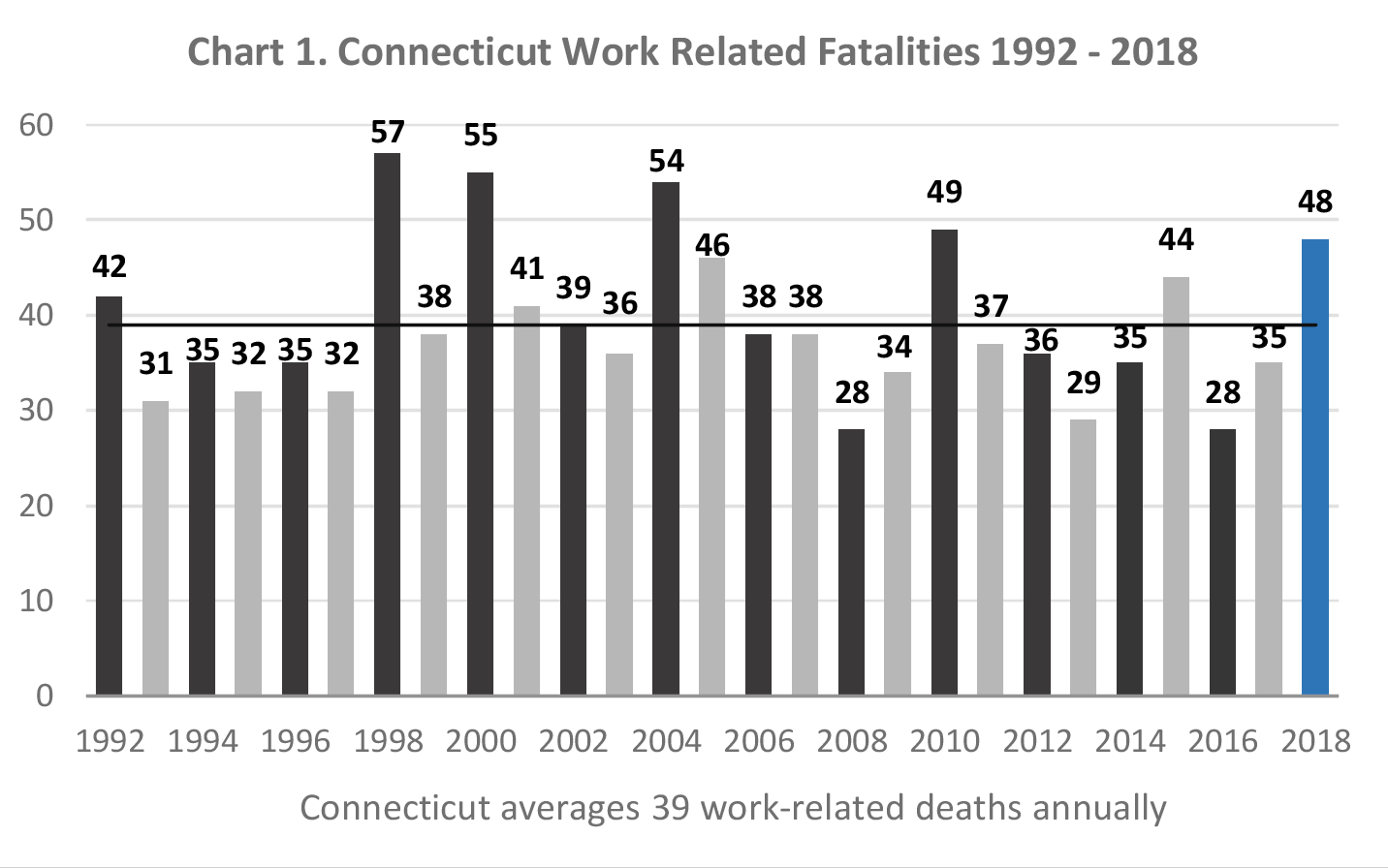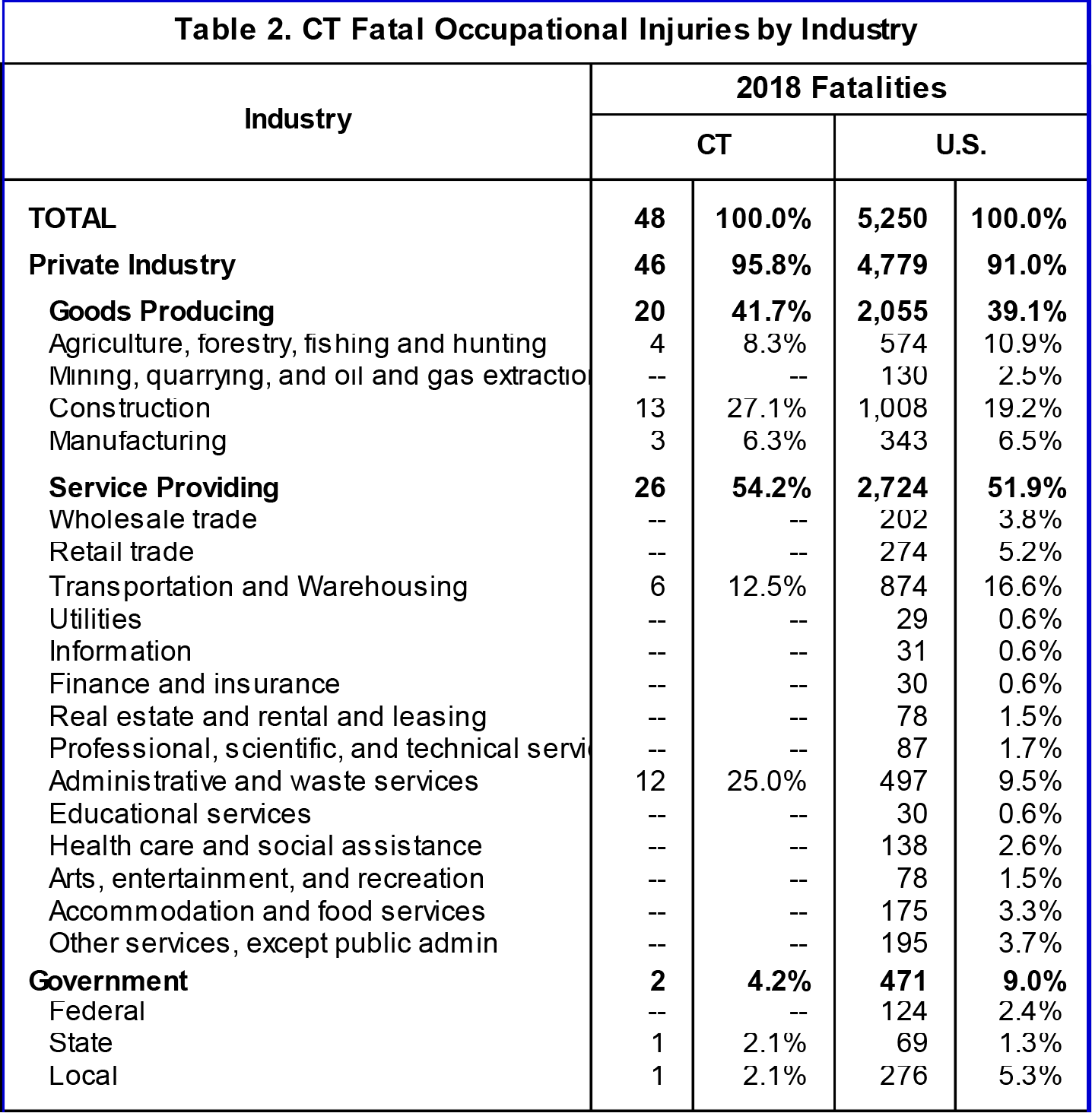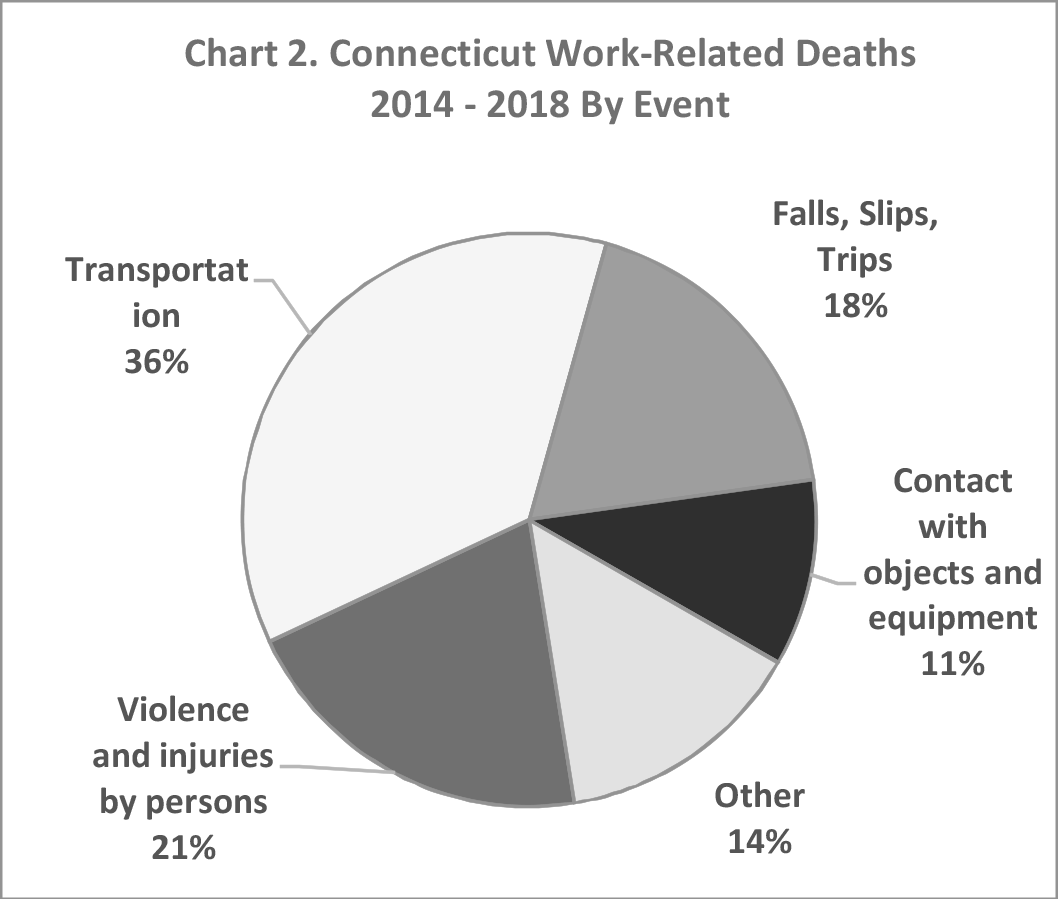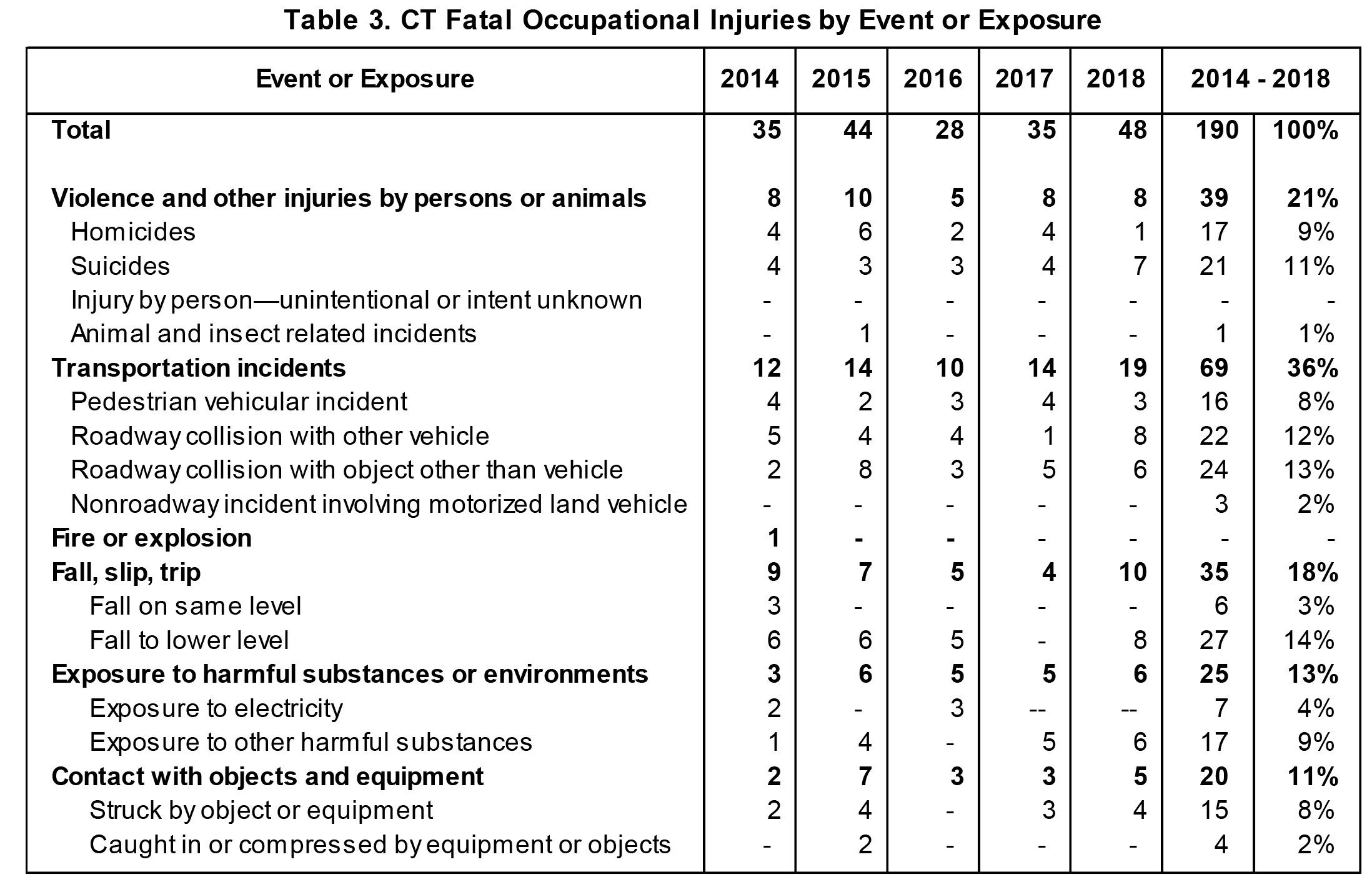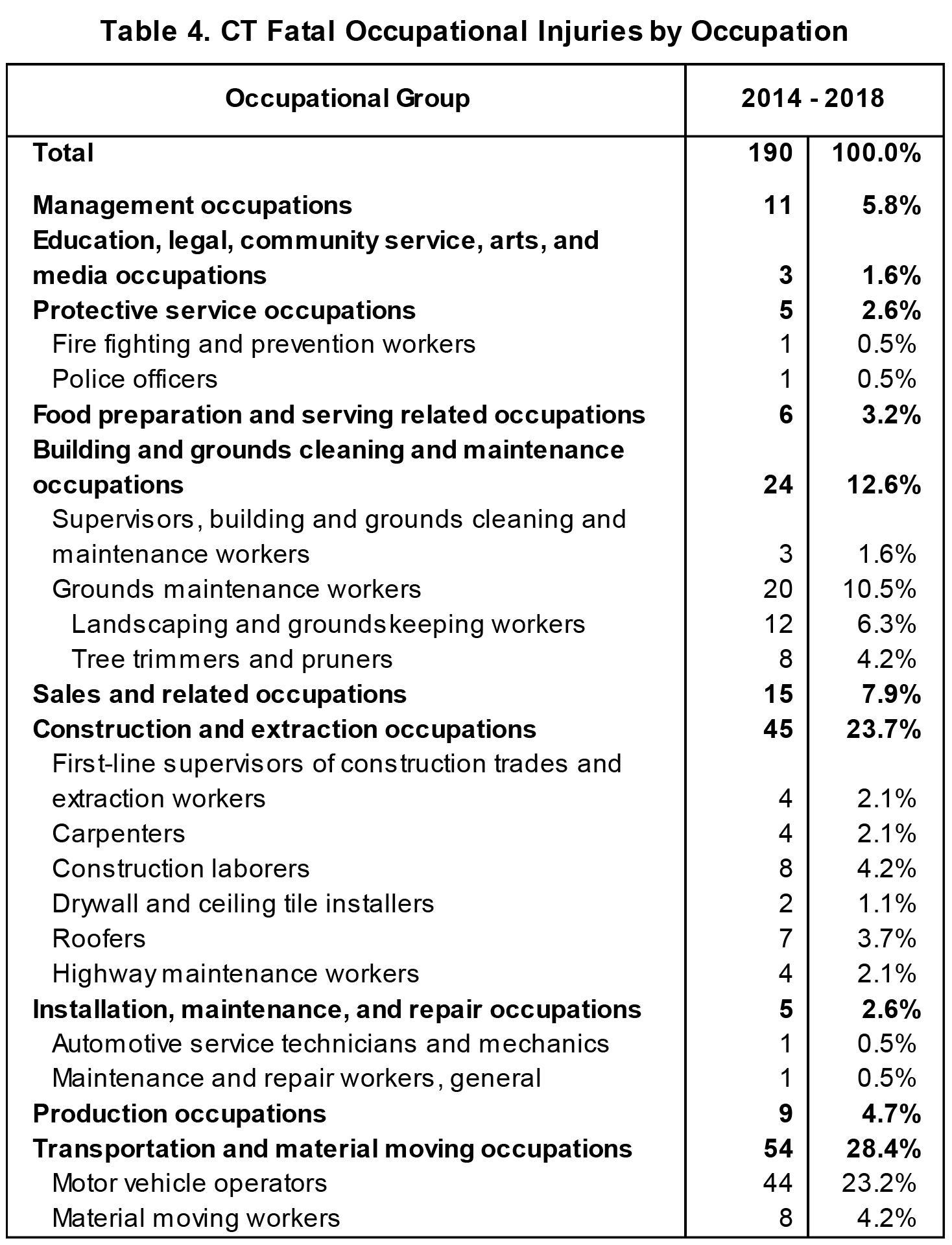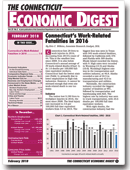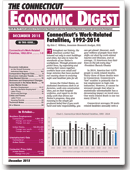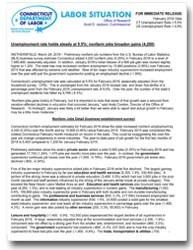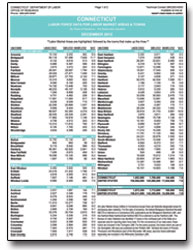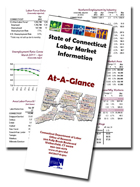Connecticut's 2018 Work-Related Fatalities - Above Annual Average
By Erin C. Wilkins, Associate Research Analyst, Department of Labor
Connecticut lost 48 lives to work injuries in 2018, for a rate of 2.8 deaths per 100,000 full-time equivalent workers. An increase from 2017's count of 35, it is higher than Connecticut's annual average of 39 work-related deaths (Chart 1).
The nation lost 5,250 lives to workplace injuries in 2018, an increase from 2017's 5,147 deaths. However, the fatal injury rate remained unchanged from 2017 - 3.5 per 100,000 full-time equivalent workers. The highest loss was seen in Texas with 488 deaths, followed by California with 422 deaths and Florida with 332 deaths. High rates were recorded in Wyoming (11.5) and Alaska (9.9). Delaware recorded both the lowest loss and the lowest rate with 7 deaths and a rate of 1.6.
Industry
Nationally, the construction industry recorded the highest number of deaths at 1,008, followed by transportation and warehousing with 874 deaths. The highest rate by industry was seen in truck transportation, with 28.3 deaths per 100,000 full time equivalent workers.
Occupations
From 2014 to 2018, Connecticut had a total of 190 work related deaths. Of these, 28 percent were in the transportation and material moving occupations category. Eighty-one percent of which were motor vehicle operators, with material moving workers claiming an additional 15 percent. The construction and extraction occupational group, with 45 deaths, came in second. Construction laborers had 8 deaths, followed by roofers with 7 deaths. Also in this category are carpenters, drywall and ceiling tile installers, and highway maintenance workers (Table 4).
Nationally, the transportation and material moving occupational group and the construction and extraction occupational group accounted for 47 percent of worker deaths in 2018. Transportation and material moving occupations lost 1,443 workers and construction and extraction occupations lost 1,003 workers. Logging workers had a high rate of 97.6 (56 deaths), followed by fishers and related fishing workers with a rate of 77.4 (30 deaths).
Identifying Work-Related Deaths
The CFOI (Census of Fatal Occupational Injuries) program requires a minimum of two sources to verify a work-related death. The media is often the first notice of a work-related death. Other resources include death certificates, coast guard reports, the NHTSA (National Highway and Traffic Safety Administration), and OSHA (Occupational Safety and Health Administration).
While every attempt is made to capture every work-related death, some are missed. The CFOI program uses diverse state, federal, and independent data sources to identify, verify, and describe fatal work injuries. This ensures counts are as complete and accurate as possible.
It is important to note that the Bureau of Labor Statistics holds all information on companies and the deceased in strict confidence. Information is never shared for compliance measures.
OSHA requires all employers to report workplace fatalities within eight hours. Included are small establishments and industries that are normally exempt from OSHA jurisdiction. Natural deaths, such as heart attacks, must also be reported. However, many employers are unaware of this requirement. Additionally, OSHA does not require employers to report all fatalities. Employers are not required to report:
- Street and transportation deaths unless they occur in a construction work zone
- Deaths on commercial or public transportation systems (airplane, subway, bus, train, etc.)
- Deaths occurring more than 30 days after the incident
OSHA does not investigate every work-related death. Homicides and most transportation incidents fall outside OSHA‘s jurisdiction. However, OSHA is beginning to investigate some of these incidents to develop training programs. Homicides may be prevented with changes in security cameras and enforcing safety rules. Transportation deaths can be prevented with training programs on distracted driving, sleep deprivation, and safe driving techniques.
History of the Program
When President Nixon signed the Occupational Safety and Health Act of 1970 (OSHA) into law, a census of work place fatalities did not exist. It was estimated that approximately 14,000 workers were killed on the job annually. While OSHA immediately began investigating workplace deaths, the U.S. Department of Labor did not have a comprehensive statistical program dedicated to documenting workplace deaths.
In 1992, the Bureau of Labor Statistics' Census of Fatal Occupational Injuries (CFOI) was established to track all work-related deaths and collect the much needed data. That first year, 6,217 deaths were documented nationally, 42 of which were in Connecticut. Since then, national numbers have dropped by 16 percent to 5,250 deaths in 2018.
Since 1992, the CFOI program has seen several changes. Prior to 2006, rates were calculated per 100,000 workers. Now the rates take into account the number of hours spent in the workplace, resulting in rates per 100,000 full-time equivalent workers. The coding structure for nature, part of body, event, and sources was changed in 2011. In 2012, the program began documenting contractor status, the use of drugs or alcohol, seat belt use, and union status.
Most recently, there has been a change in the release of data. Formerly, a preliminary release was made in August or September with revised, final data published in April of the following year. Beginning with the 2015 reference year, final data is now released in December – 4 months earlier than in past years. This December release is the only release of CFOI data.
The program continues to develop to meet needs of researchers. Hopefully the data will continue to be used to create engineering solutions, regulations, and education programs to minimize work place deaths.
 |


















